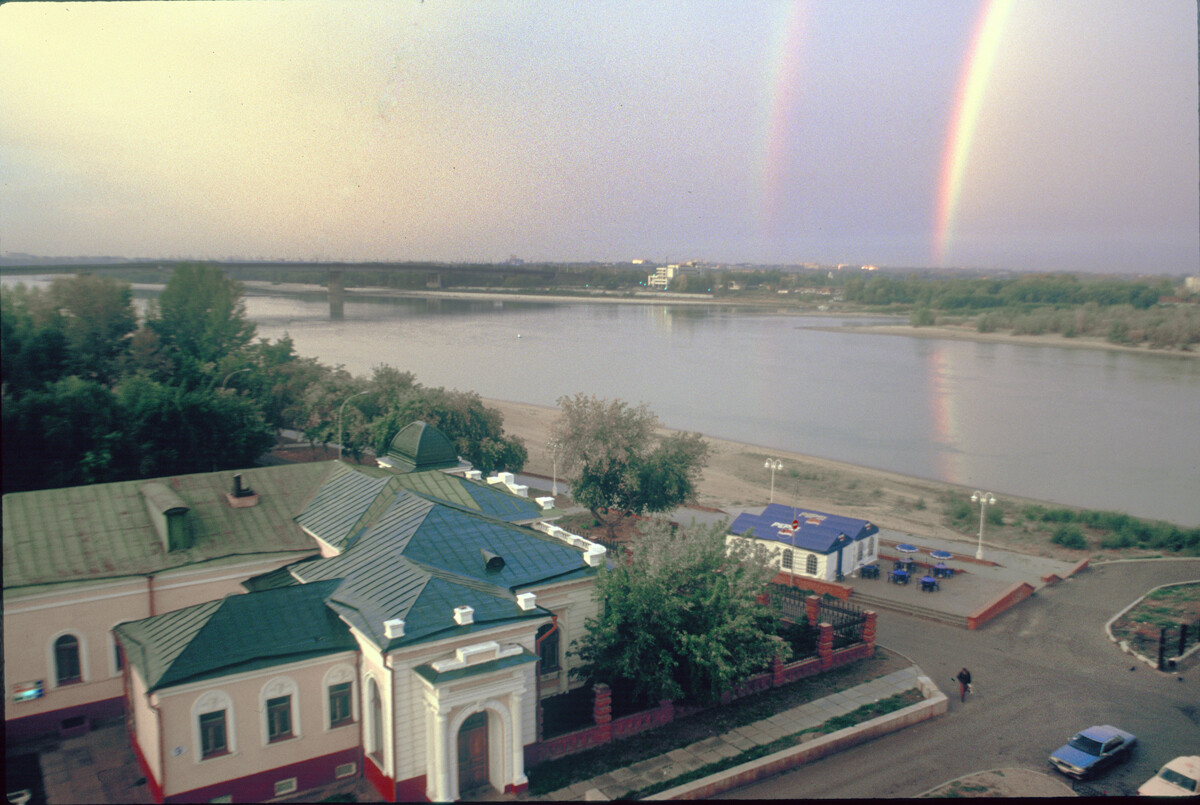
Omsk. Irtysh River, morning panorama with rainbow. Foreground: K. A. Batiushkin mansion (residence of Admiral Alexander Kolchak in 1919). September 19, 1999
William BrumfieldAt the beginning of the 20th century, Russian chemist and photographer Sergey Prokudin-Gorsky developed a complex process for vivid color photography. His vision of photography as a form of education and enlightenment was demonstrated with special clarity through his images of architectural monuments in the historic sites throughout the Russian heartland.
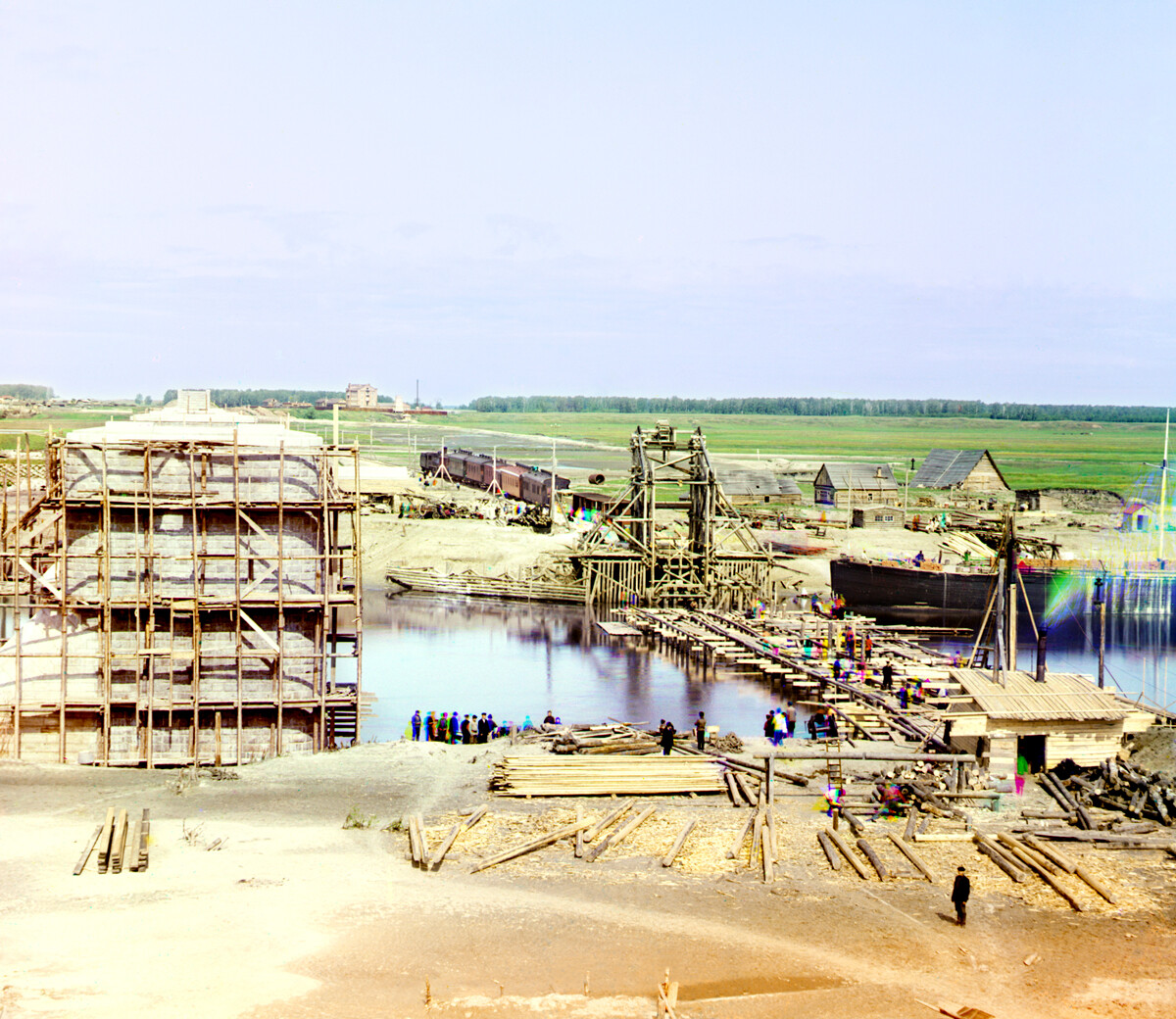
Yalutorovsk. Construction of Tobol River railroad bridge leading to Omsk. Summer 1912
Sergeн Prokudin-GorskyIn June 1912, Prokudin-Gorsky ventured into western Siberia as part of a commission to document the Kama-Tobolsk Waterway, a link between the European and Asian sides of the Ural Mountains. The town of Tyumen served as his launching point for productive journeys that included Shchadrinsk (established in 1662 on the Iset River) and Yalutorovsk (on the Tobol River).
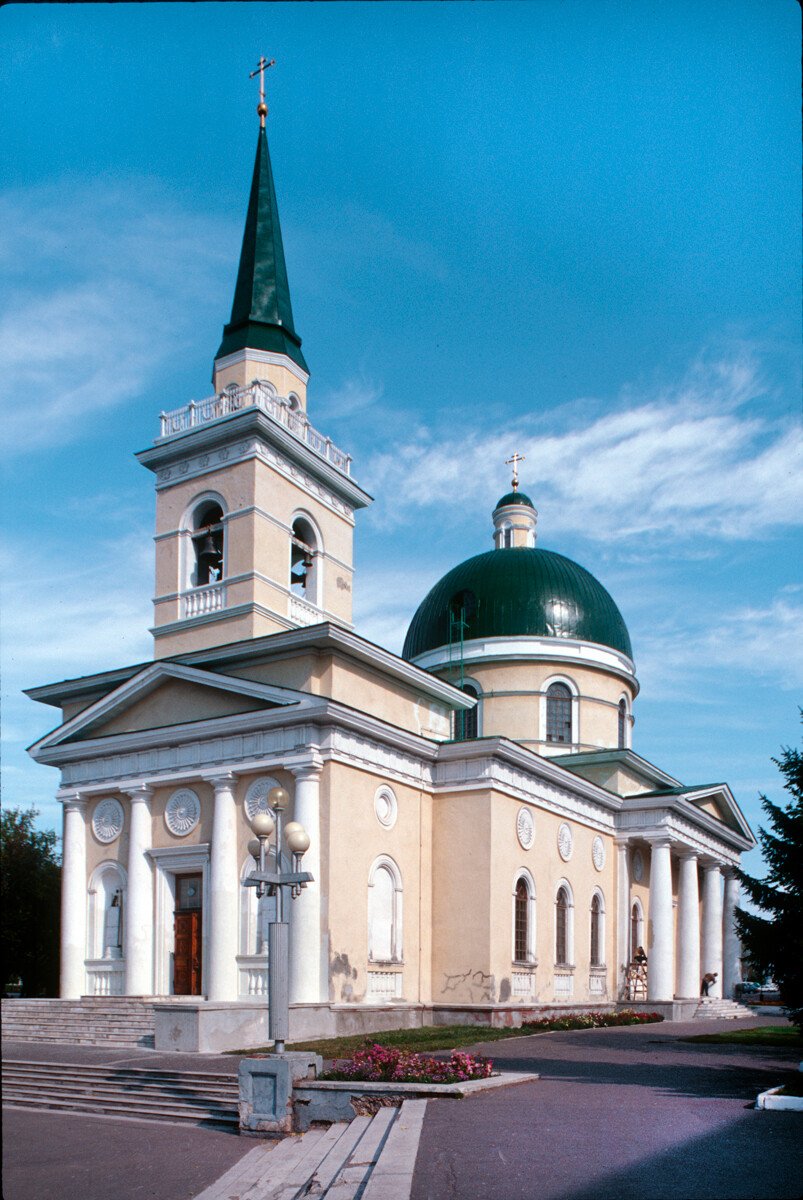
Omsk. Cossack Cathedral of St. Nicholas, southwest view. September 15, 1999
William BrumfieldFounded in 1659 at a former Tatar settlement, Yalutorovsk was the construction site of a massive railroad bridge across the Tobol River, part of the new Tyumen-Omsk rail link that opened on the Trans-Siberian Railway in October 1913 (Before then, the railroad to Siberia went through the southern Urals town of Chelyabinsk).
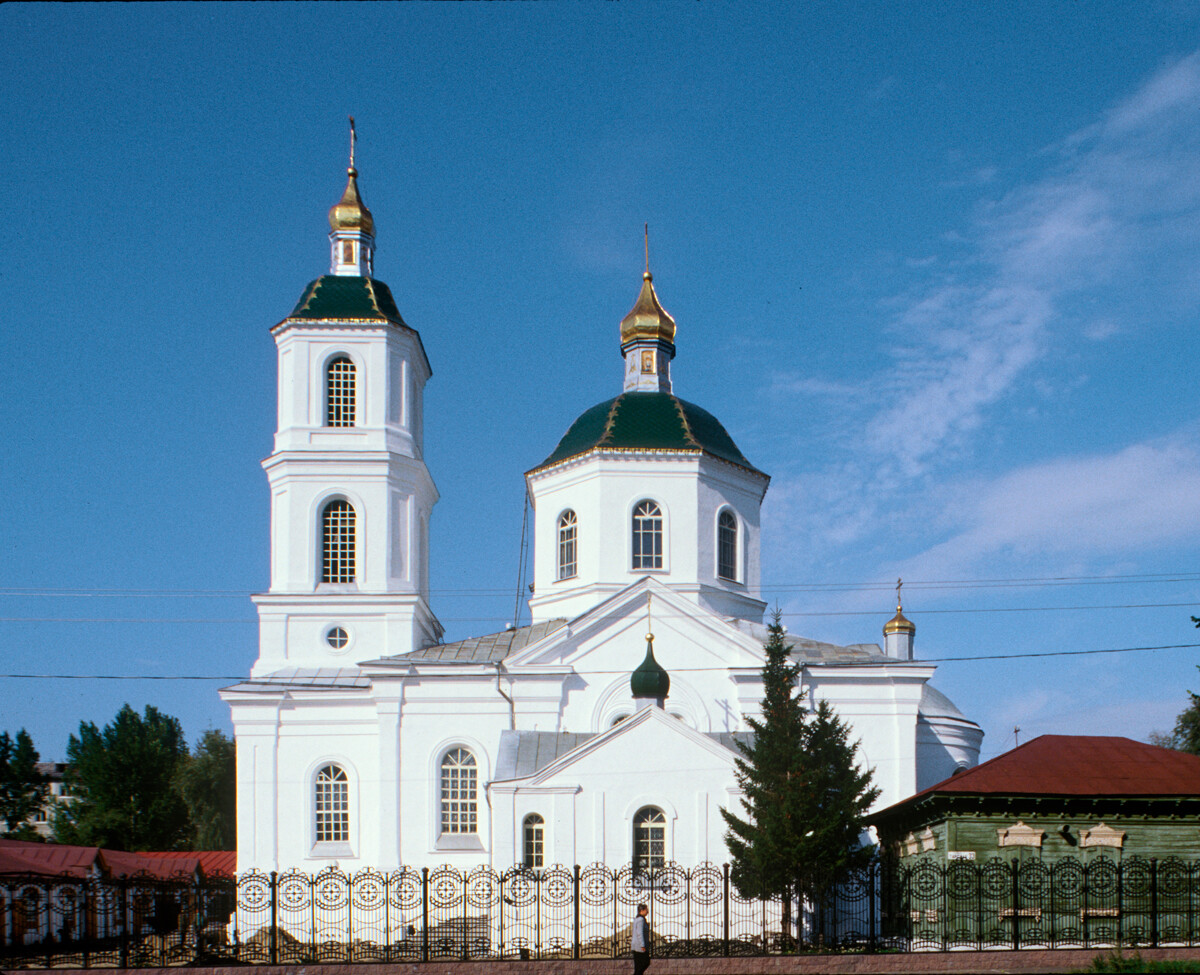
Omsk. Cathedral of the Elevation of the Cross, south view. September 15, 1999
William BrumfieldAlthough Prokudin-Gorsky did not travel to Omsk, his photographs of Yalutorovsk show the making of a crucial rail link to the “capital” of western Siberia. I, however, reached Omsk in the late Summer of 1999.
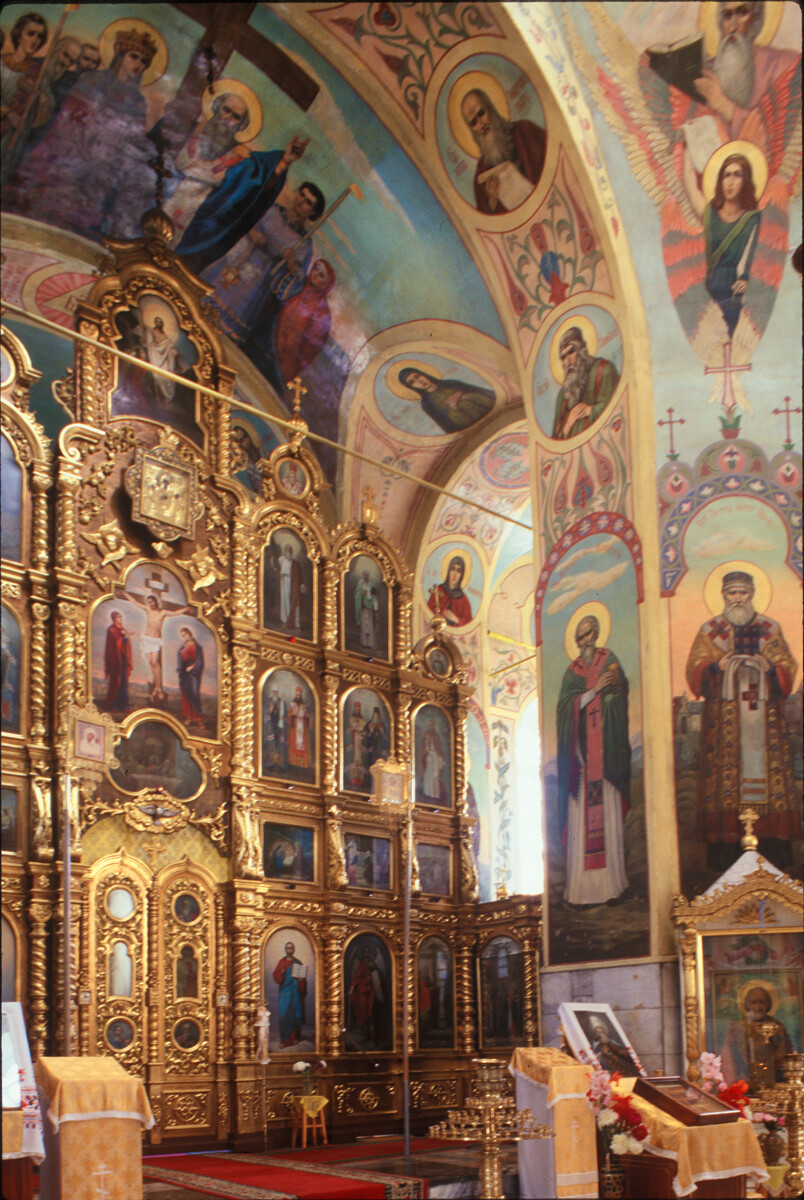
Cathedral of the Elevation of the Cross. Interior view southeast toward icon screen. September 15, 1999
William BrumfieldOmsk (current population around 1,110,000) was founded in 1716 as a fort on the middle reaches of the Irtysh River. During the 18th century, its primary purpose was to protect Russia’s southern border and establish authority over the aboriginal steppe tribes.
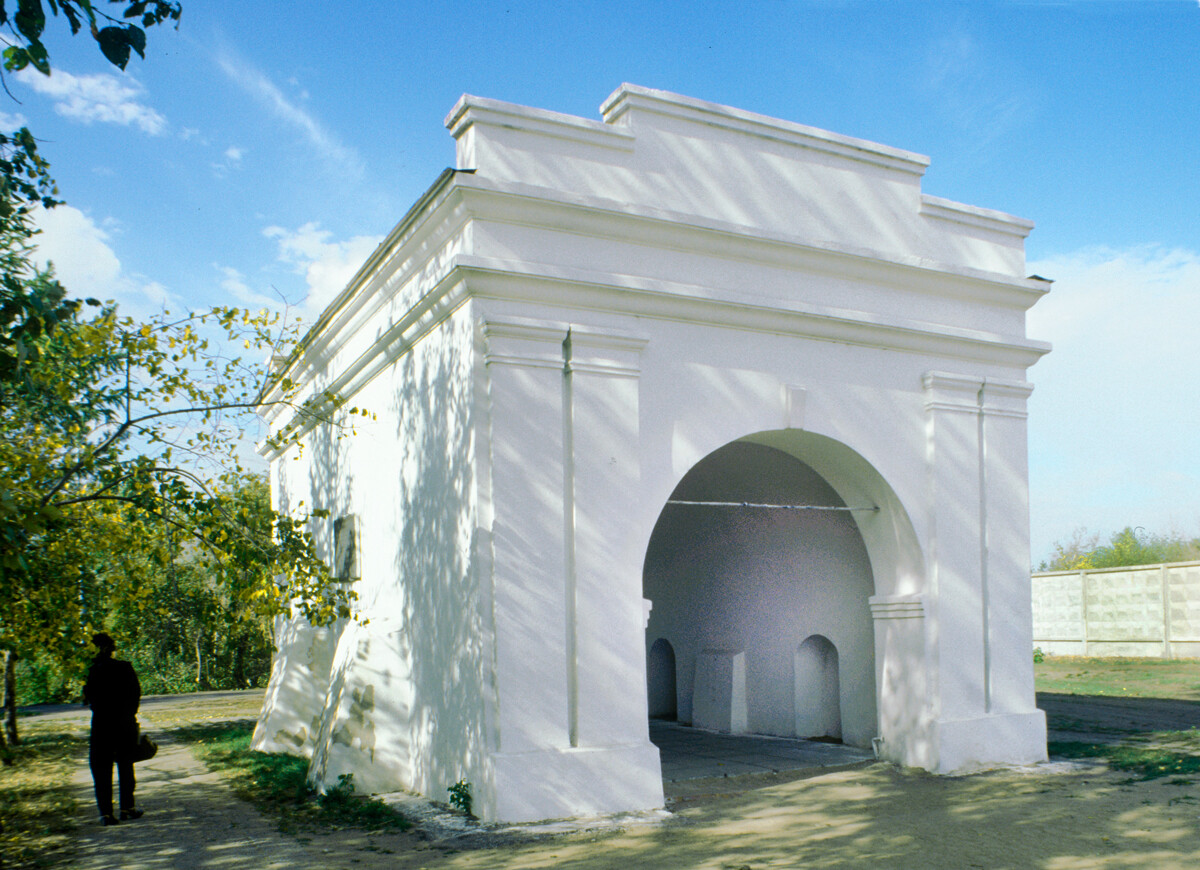
Omsk Fortress. Tobolsk Gate (originally built in 1792), the only one of the historic Omsk fortress gates to have survived. September 15, 1999
William BrumfieldAlthough administratively subordinate to Tobolsk throughout the 18th century, Omsk gained increasing power in the 19th century. From 1808 until 1917, Omsk served as the headquarters of all Siberian Cossack troops and, in 1822, a separate Omsk Province was formed.
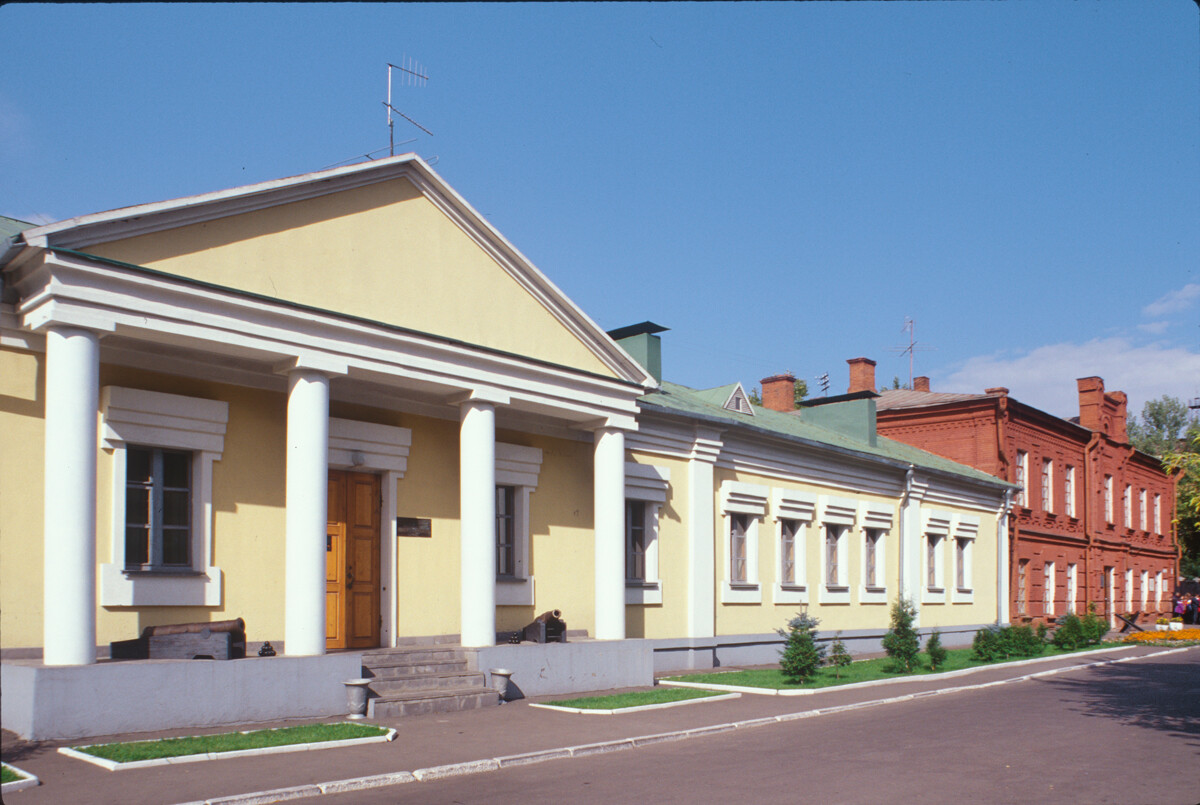
Headquarters of Omsk Fortress (Taube Street), originally built in 1810s, modified in 1997. Red brick building on right (1915-17): Staff of Omsk Military District. September 15, 1999
William BrumfieldShortly thereafter, construction began on the Cossack Cathedral of St. Nicholas (1833-1840), based on a plan by the noted Russian architect Vasily Stasov. The St. Nicholas Cathedral was severely disfigured during the Soviet period, but has now been restored. It is, once again, the repository of one of the area’s great relics, the banner of Yermak, the late 16th-century Cossack leader who first established Muscovy’s presence in Siberia.
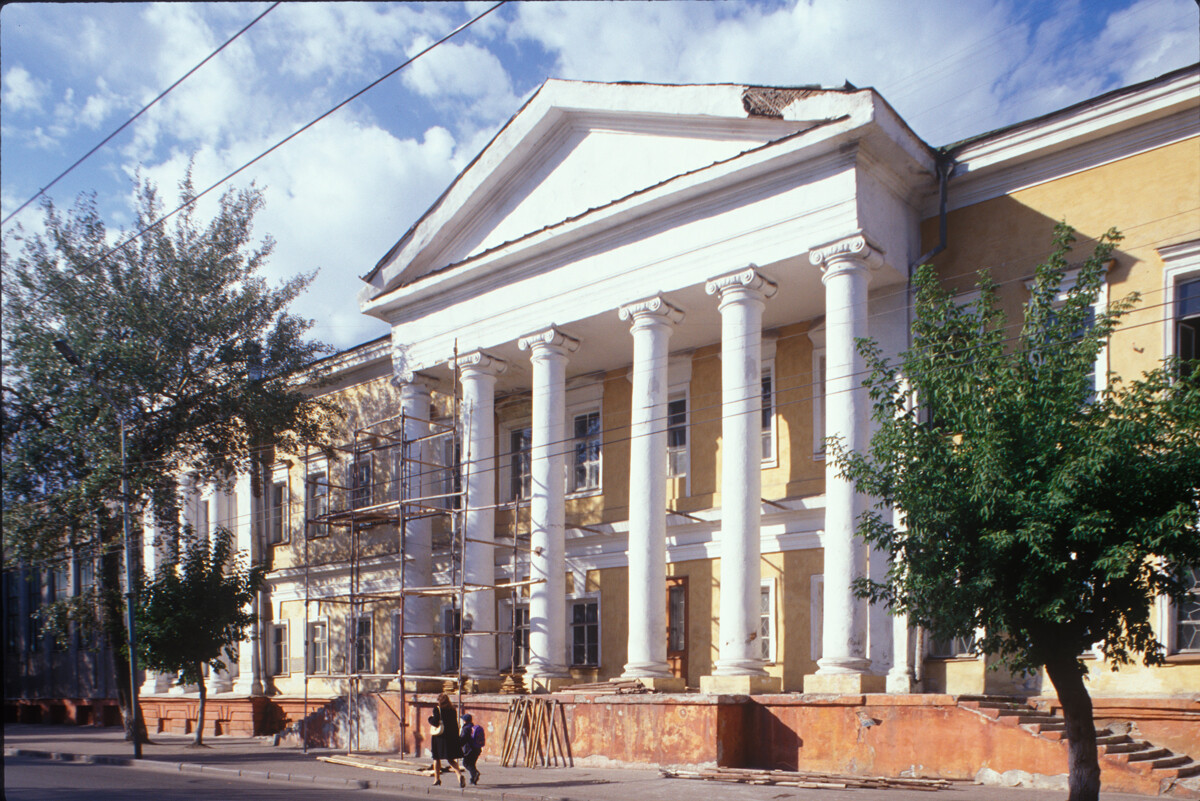
Siberian Cadet Corps building (Lenin Street 26), built in 1820s. In the prerevolutionary period, the street was known as Chernavin Prospekt, after a popular progressive mayor. September 15, 1999
William BrumfieldIn 1865-1870, Omsk witnessed the construction of another cathedral, dedicated to the Elevation of the Cross. It, too, survived the devastation of the 1930s and was reopened for worship in November 1943. In addition to its Orthodox churches, Omsk has mosques (the administration of the Iman of Siberia is located in Omsk), a remarkable wooden synagogue and a large Baptist church built in 1907.

Residence of Governor-General of Western Siberia (Lenin Street 23), built in 1859-62 by Friedrich Wagner for Governor Gustav Gasford. Now one of the three buildings of Omsk Museum of Art. September 18, 1999
William BrumfieldIts pervasive military presence linked Omsk with the Siberian exile system. The most famous of the fortress’ exiles was the writer Fyodor Dostoevsky, condemned in 1849 for associating with intellectual “radicals” in St. Petersburg. In January 1850, Dostoevsky arrived under guard at the Omsk fort and, for the most part of three years (1850-54), he lived the harrowing existence of a convict sentenced to hard labor, which included unloading barges on the Irtysh River.
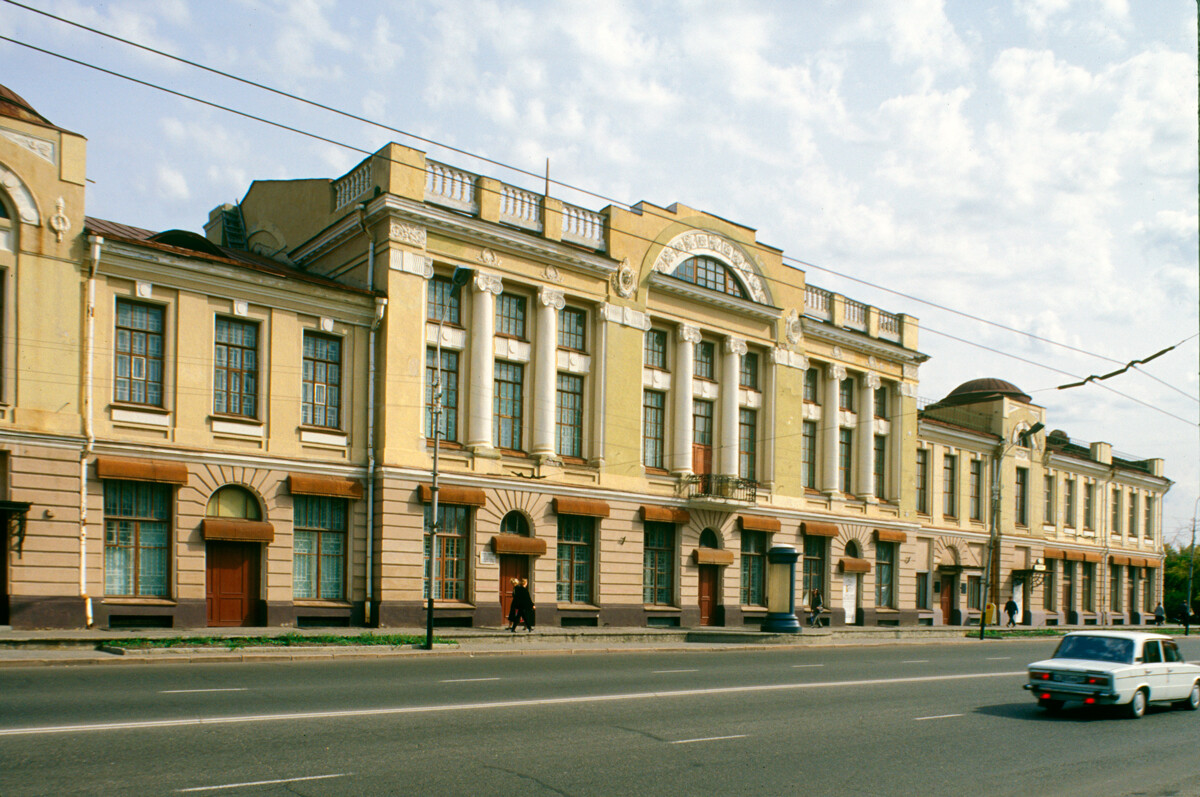
City Trade Building (Lenin Street 3), built in 1914 by Andrei Kriachkov. Now the main building of Omsk Museum of Art. September 16, 1999
William BrumfieldWhen his health broke down under the physical and psychological strain, Dostoevsky was hospitalized under the care of a sympathetic medic. It was during his stay in the infirmary that Dostoevsky began the writing of one of his seminal works, ‘Notes from the House of the Dead’. A few buildings still survive from that time, including one of the fortress gates.
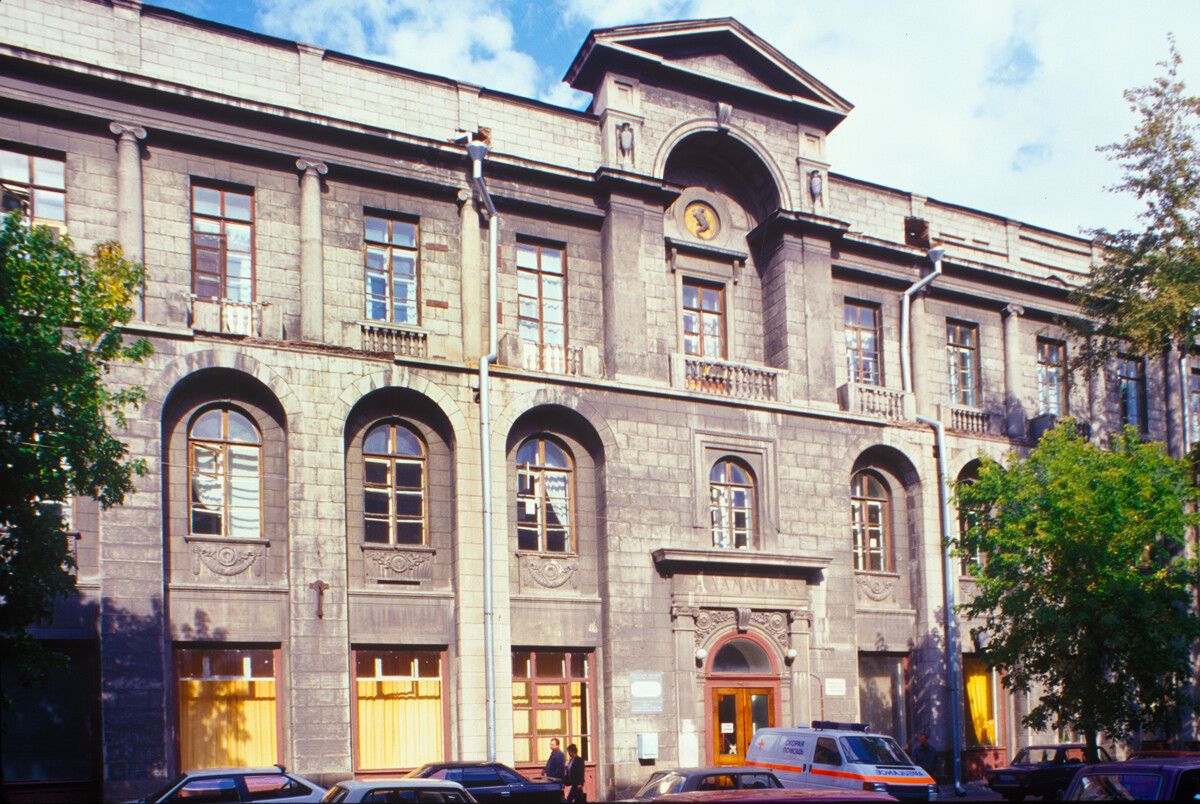
"Salamander" Insurance Company building, K. Liebknecht (formerly Gasford) Street 3, built by Nikolai Verevkin in 1913-14. Now one of the three buildings of Omsk Museum of Art. September 15, 1999
William BrumfieldDuring the latter part of the 19th century, Omsk began a period of heady expansion, as the town became a transportation center for Russia’s vast interior. Regular steamboat service along the Irtysh River to Tobolsk began in 1862.
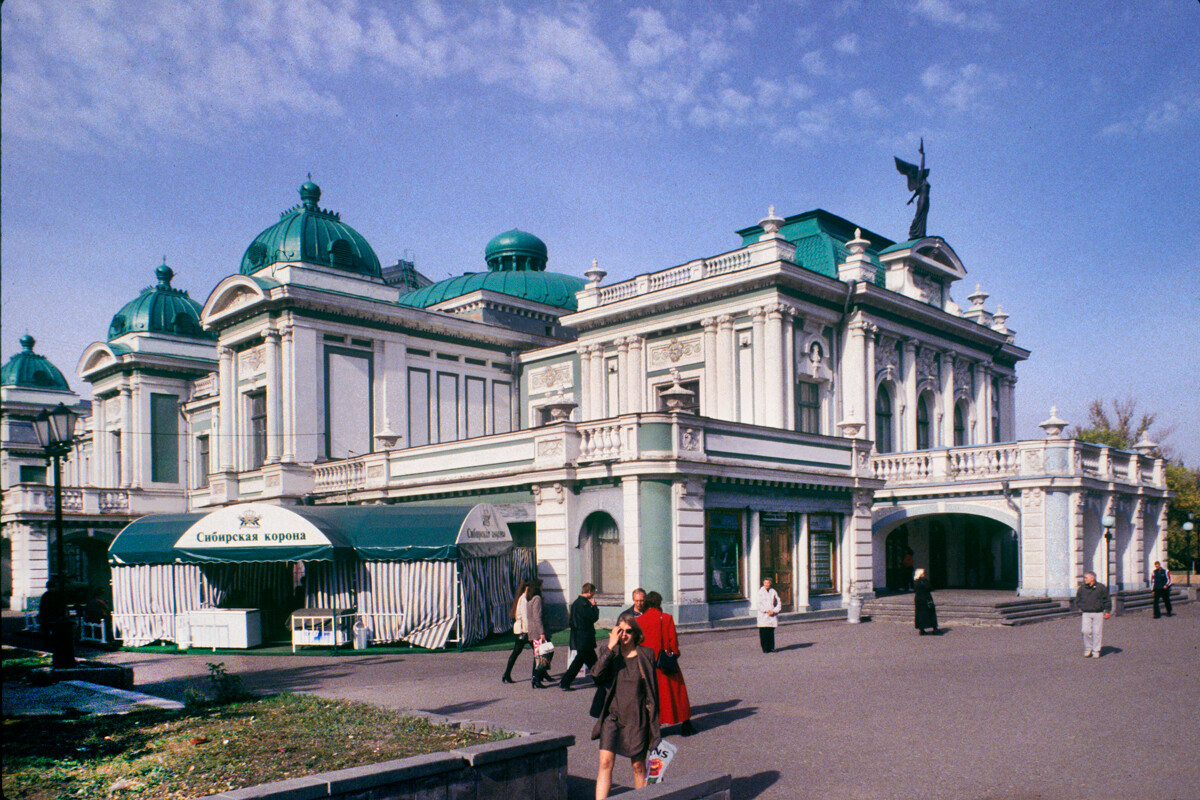
Omsk Drama Theater, Lenin Street 8A. September 15, 1999
William BrumfieldBut, it was the railroads that made Omsk a boomtown. In 1894-1895, Omsk was linked by the Trans-Siberian Railroad to Chelyabinsk in the west and Novonikolaevsk (later Novosibirsk) in the east. In 1913, another rail line was completed from Omsk to Tyumen in what would become the new Siberian mainline. By the beginning of the 20th century, the population of Omsk had tripled to over 60,000 inhabitants.
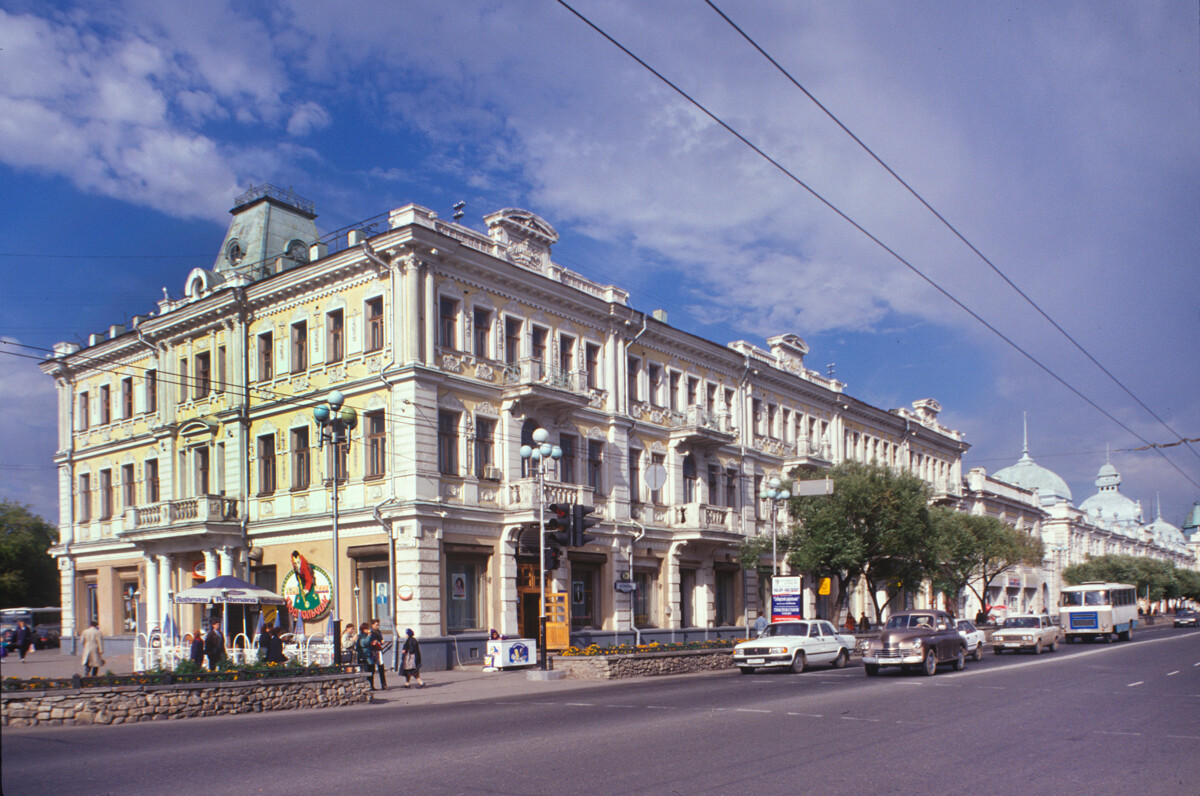
"Rossiya" Hotel (Lenin Street 18). Built by Iliodor Khvorinov in 1905-07; expanded in 1915. September 15, 1999
William BrumfieldThis development as a transportation nexus led to a surge in the city’s commercial district. What had formerly been a provincial garrison town consisting primarily of wooden structures punctuated with large churches, now became a preeminent site for banks, educational institutions, industry and retail trade in Siberia.
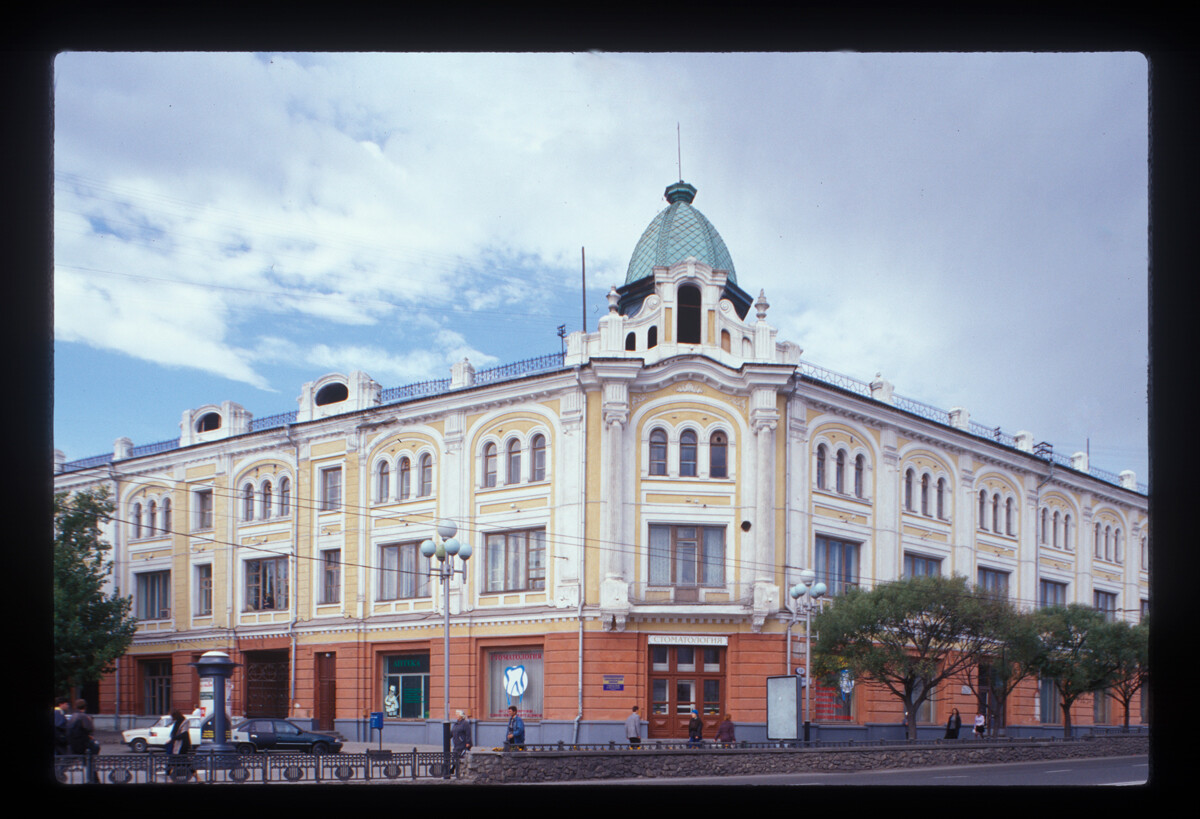
Brothers Ovsiannikov-Ganshin & Sons building (Lenin Street 12), originally completed in 1906 for a major textile company. Now the Omsk Medical Academy. September 15, 1999
William BrumfieldIn addition to branch offices for major banks and firms in Moscow and St. Petersburg, Omsk received investment from companies in the United States, Germany and Great Britain. The central part of Omsk had buildings whose design rivaled Moscow’s business district. Many of the new commercial projects were built in styles derived from the Florentine Renaissance.
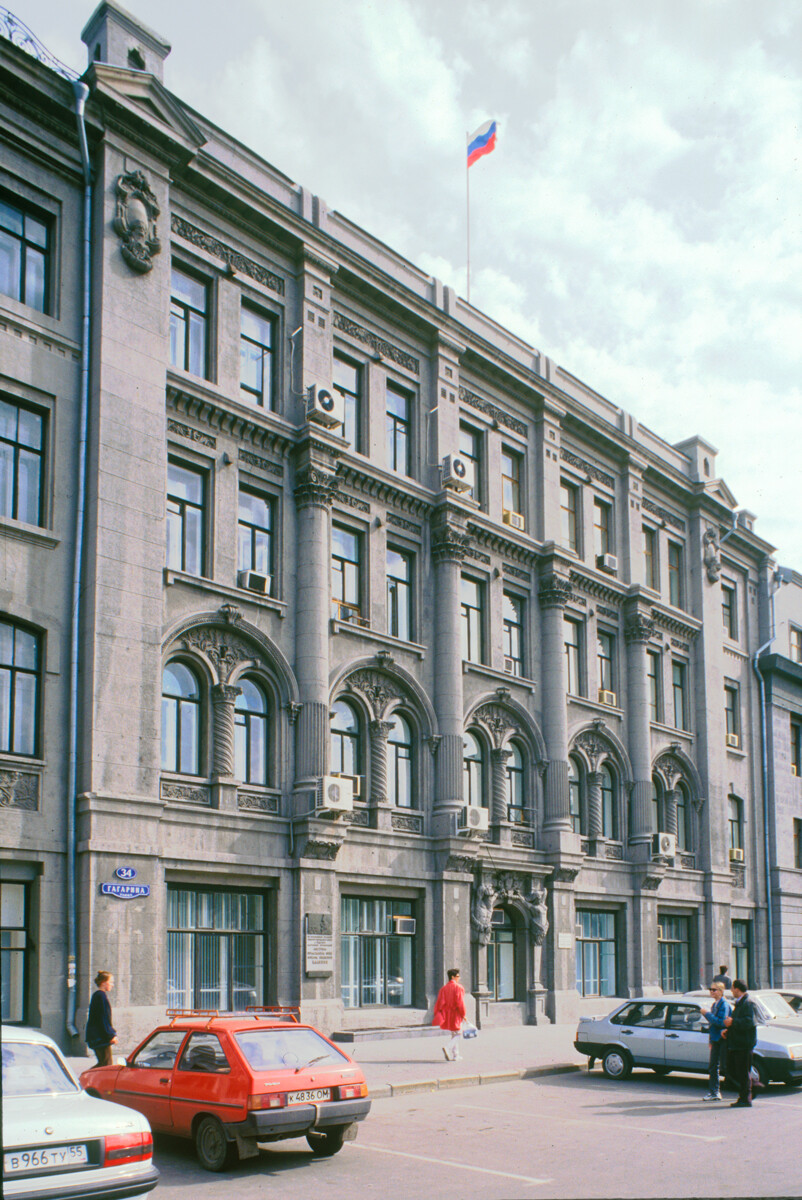
Russo-Asiatic Bank (Gagarin Street 34), built in 1915-17 by Fyodor Chernomorchenko. Now Omsk City Hall. September 16, 1999
William BrumfieldCultural institutions also took root. In 1901-05, a large theater was built in a florid Beaux Arts style designed by the architect Iliodor Khvorinov. The theater still stands as an object of civic pride. Wooden houses with decorative detailing also grace the city, but their number has steadily decreased under the pressures of urban development and inadequate maintenance.
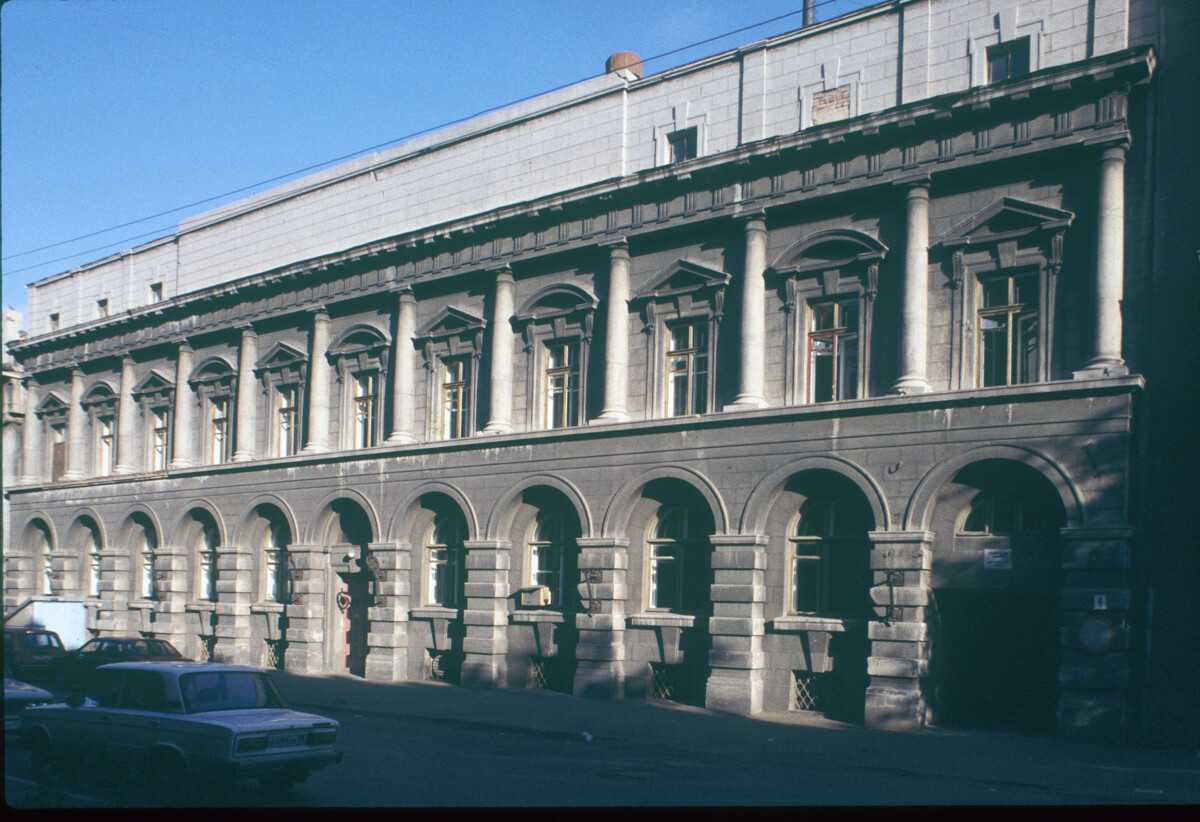
"Treugolnik" (Russian-American Rubber Co.) Building, K. Liebknecht (formerly Gasford) Street 4, built by Nikolai Verevkin in 1914-15. September 15, 1999
William BrumfieldDuring World War I, the then strategically located Omsk grew still further and, by 1917, the city’s population had reached 100,000. Following the October Revolution, Bolshevik power was proclaimed almost immediately in Omsk, but, with little local support, the Bolsheviks were driven from the city in June 1918.
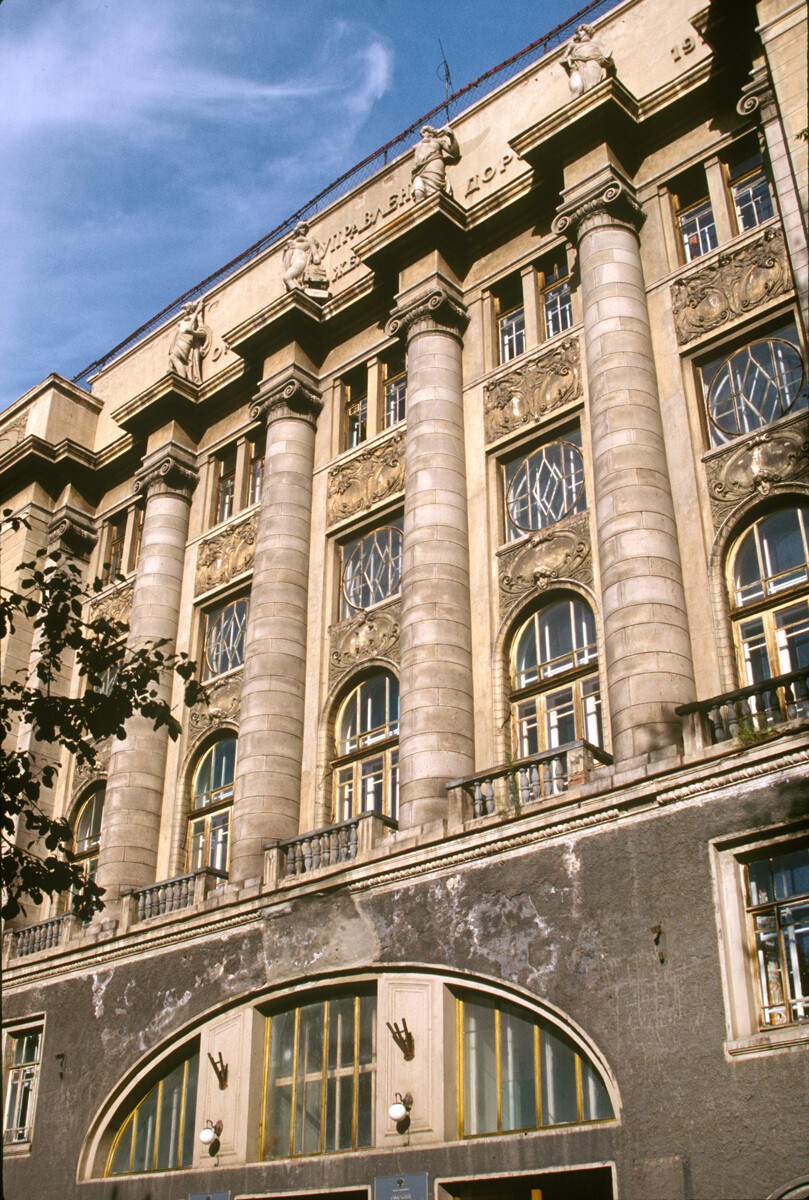
Omsk Railroad Administration (Karl Marx Street 35), de factor headquarters of western Trans-Siberian Railway. Built in 1914-16 by Fyodor Lidval. September 18, 1999
William BrumfieldOpposition to the Bolsheviks was fatally divided and, in November 1918, a military coup installed a dictatorship headed by Admiral Alexander Kolchak (1874-1920), a renowned polar explorer and gifted naval commander, but incapable of dealing with the chaos of the Russian civil war (The mansion where Kolchak had his headquarters is a prominent landmark).
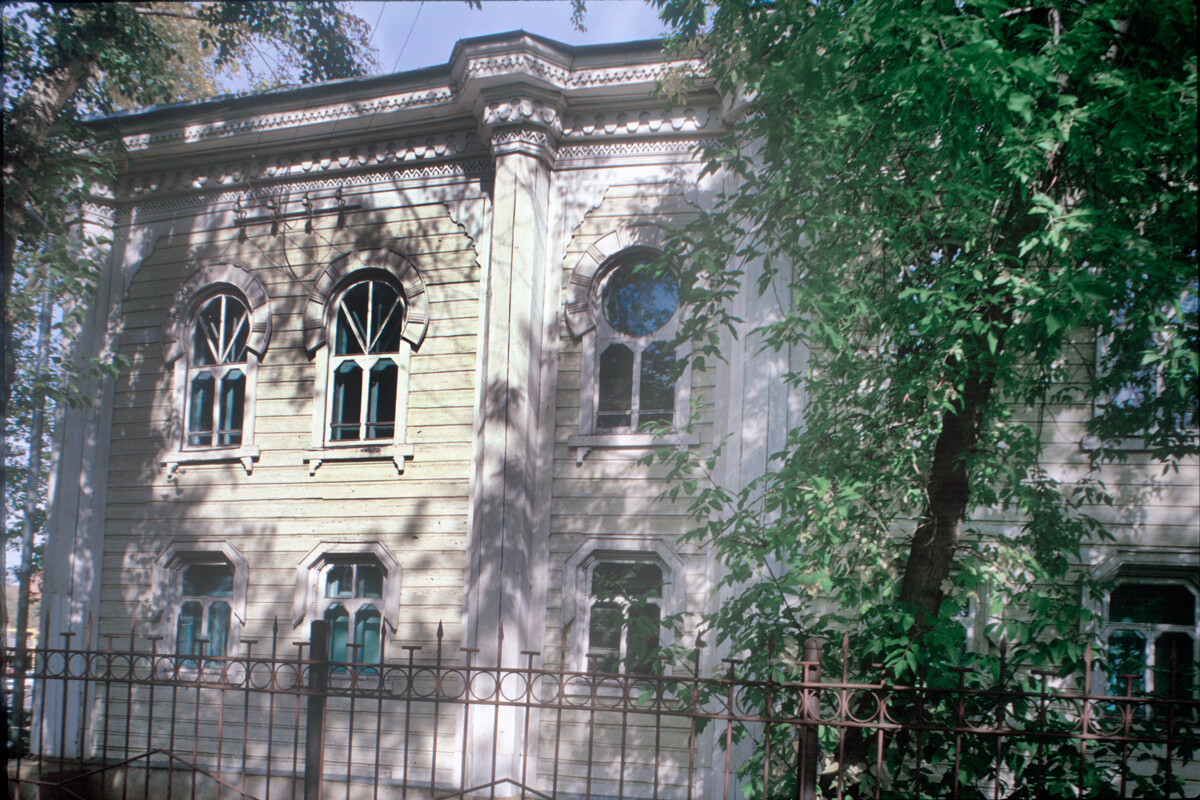
Omsk Synagogue (Marshal Zhukov Street 53). Known as "Soldiers Synagogue," built in 1855. September 18, 1999
William BrumfieldFor almost a year, Omsk could be considered the “capital” of the White forces in the Russian Civil War. In November 1919, Kolchak’s forces were driven from Omsk. In 1921, Omsk became one of the centers of the American Relief Agency during the terrible famine that afflicted vast territories in the Volga basin.
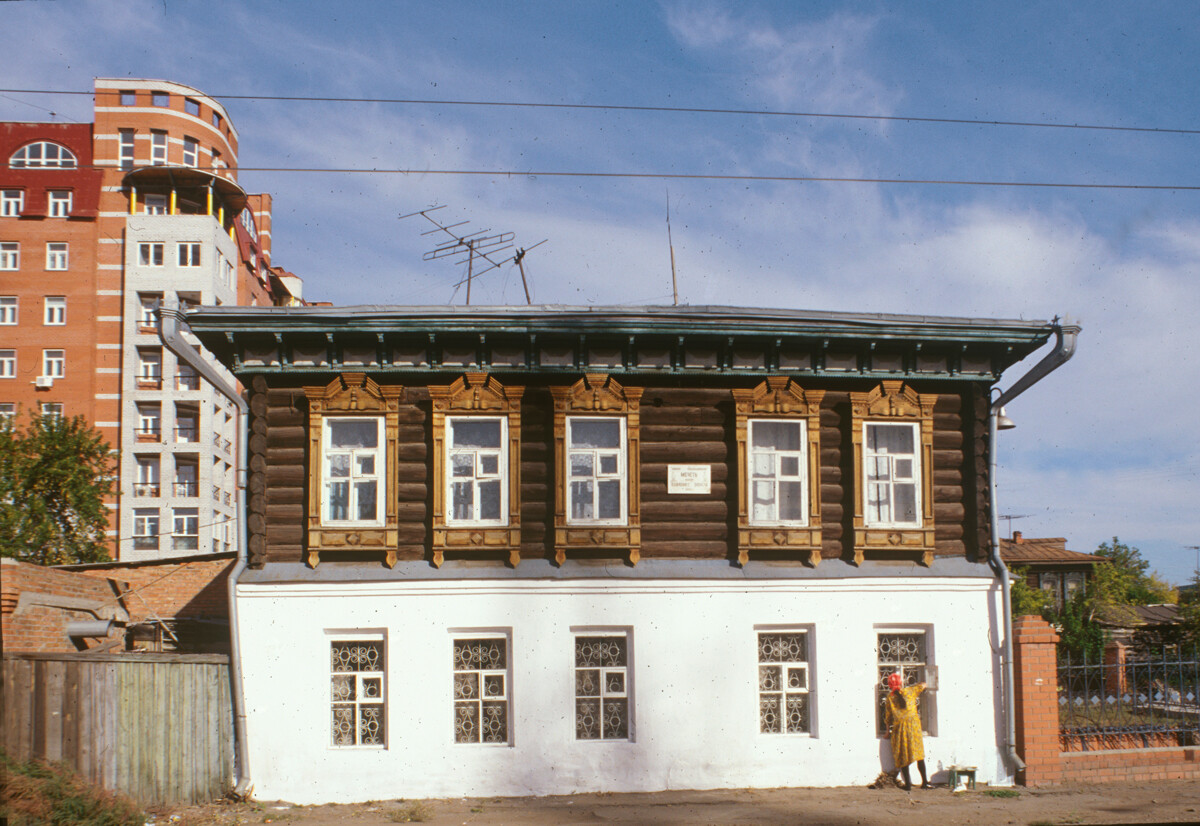
Hodja Akhmed Mosque (Marshal Zhukov Street 97). September 18, 1999
William BrumfieldWith its economy shattered and the countryside still recovering, Omsk struggled through the 1920s and achieved renewed industrial growth in the 1930s. Like many Siberian cities, it expanded rapidly during World War II as an evacuation haven and as a center of transportation and production.
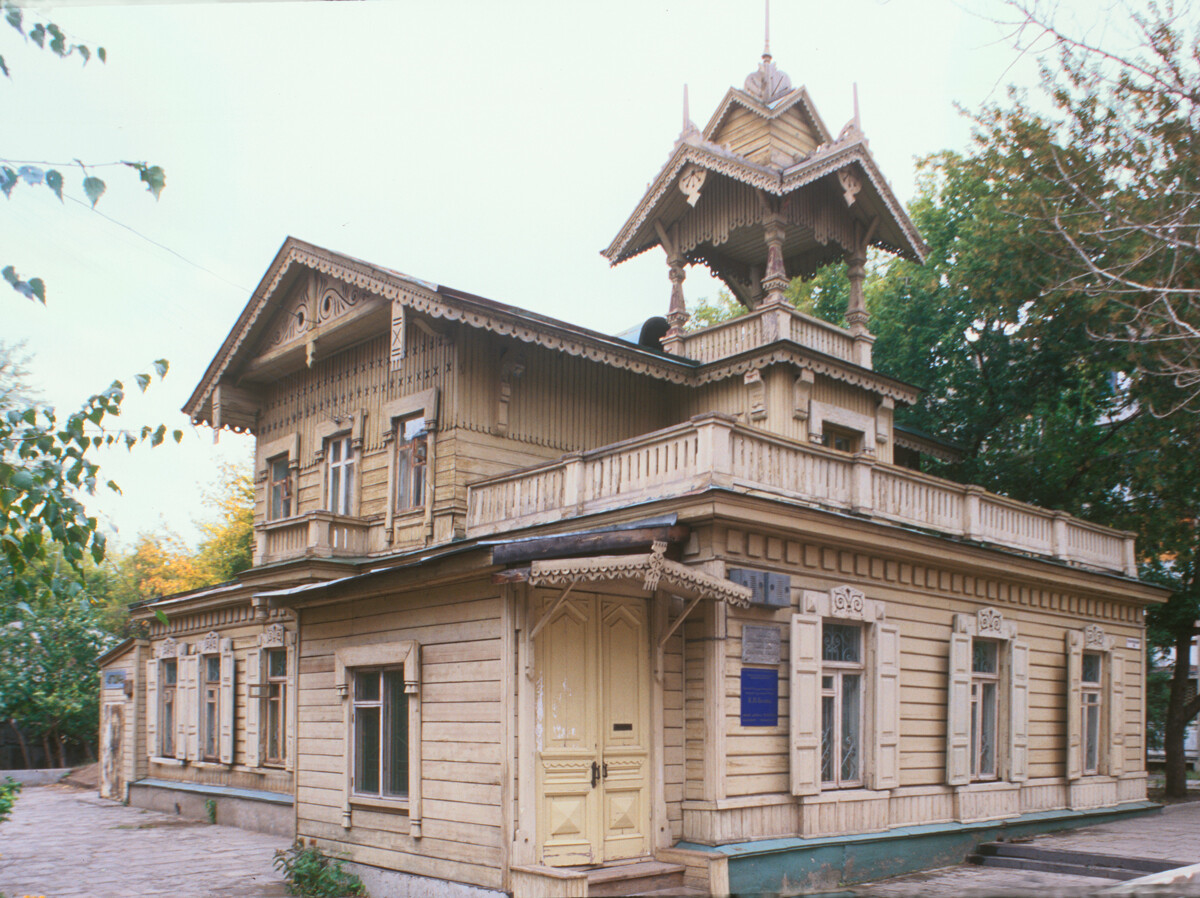
Philip Shtumfp house (Valikhanov Street 10), built at turn of 20th century for a prominet agronomist, entrepreneur, civic activist. September 19, 1999
William BrumfieldDevelopment of the city’s military-industrial complex continued after the war and, by the end of the 1970s, the population exceeded 1,000,000 – a benchmark of major significance. Omsk also became a center of the oil and gas industry.
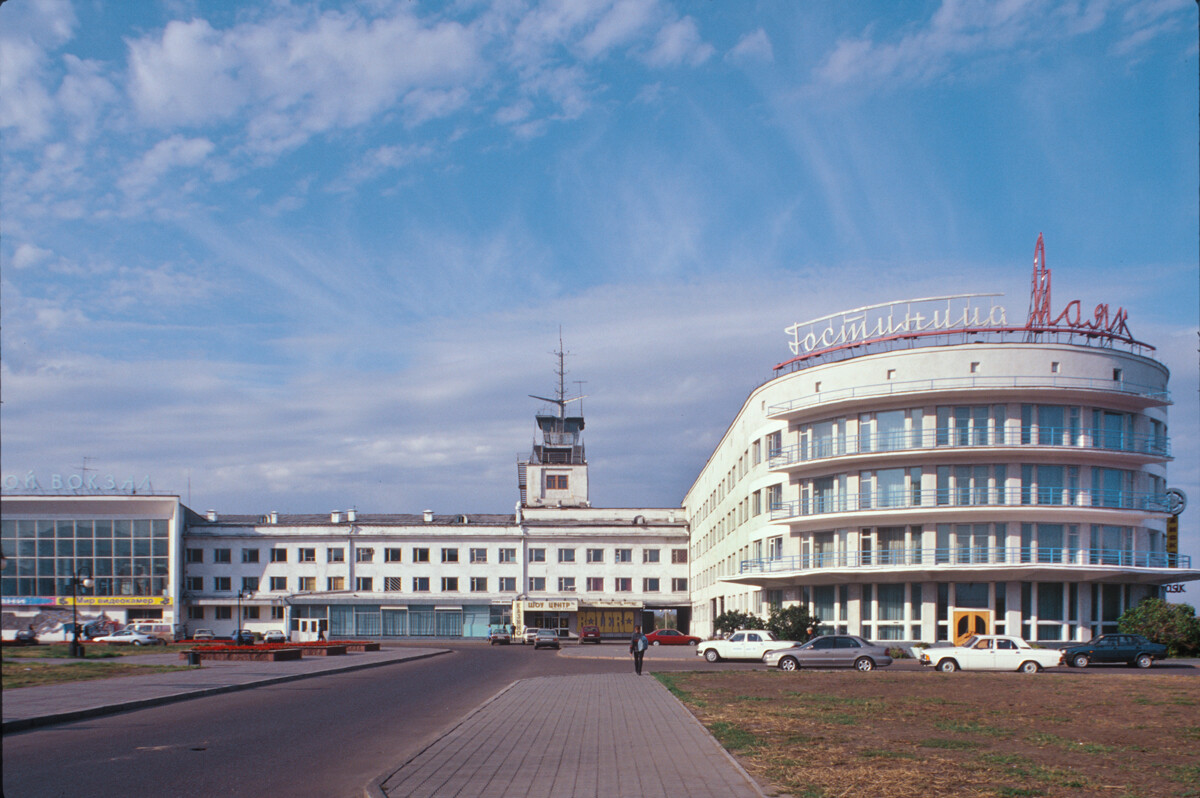
Omsk River Station & Hotel "Mayak". Excellent example of "neo-Constructivist architecture, built on site of original Omsk fortress in 1958-64 by Leningrad architect Timofei Sadovsky. September 15, 1999
William BrumfieldThe city’s major cultural institutions include a leading state university, established in 1974 and, since 2004, named in honor of Fyodor Dostoevsky. Omsk also has one of the largest regional libraries in Siberia and a major art museum--named in honor of painter Mikhail Vrubel, an Omsk native – that now occupies three landmark buildings in the center of the city.
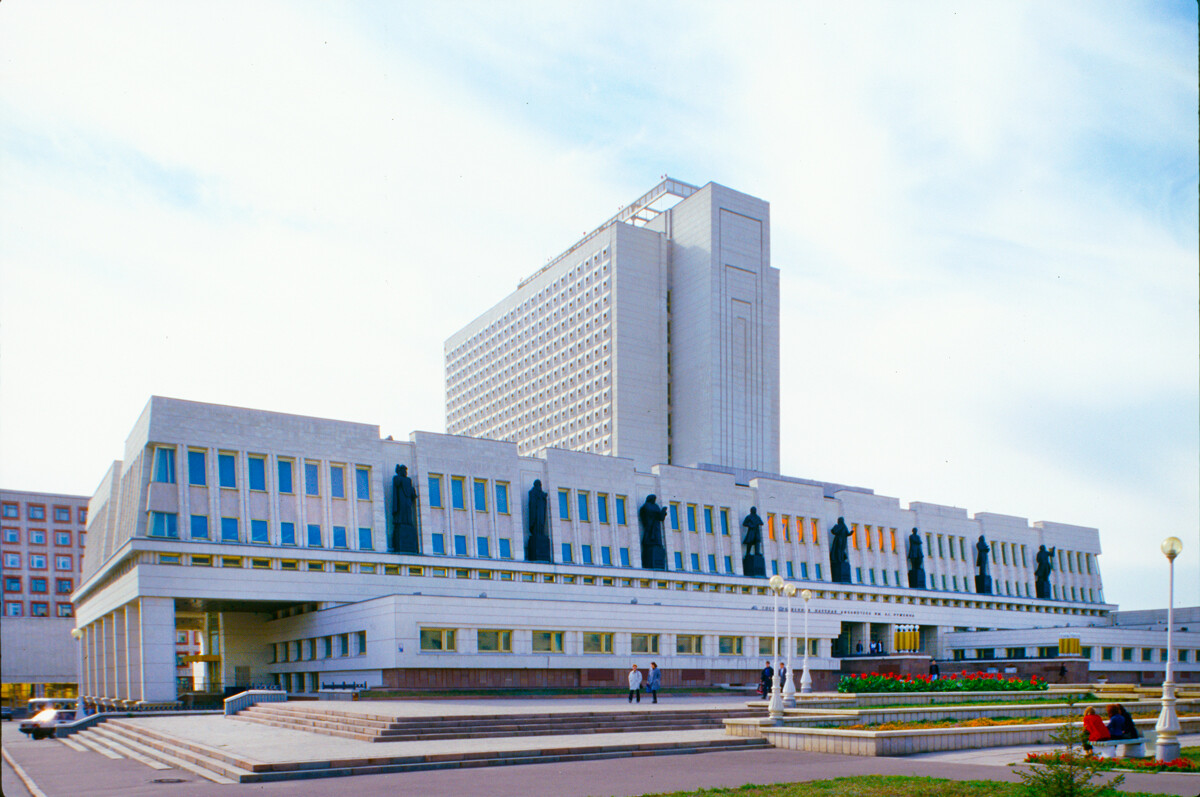
Omsk Regional Library. Built in 1986-95 by Omsk architects Galina Naritsina & Yury Zakharov. September 18, 1999
William BrumfieldIn the early 20th century, Russian photographer Sergey Prokudin-Gorsky developed a complex process for color photography. Between 1903 and 1916, he traveled through the Russian Empire and took over 2,000 photographs with the process, which involved three exposures on a glass plate. In August 1918, he left Russia and ultimately resettled in France, where he was reunited with a large part of his collection of glass negatives, as well as 13 albums of contact prints. After his death in Paris in 1944, his heirs sold the collection to the Library of Congress. In the early 21st century, the Library digitized the Prokudin-Gorsky Collection and made it freely available to the global public. A few Russian websites now have versions of the collection. In 1986, the architectural historian and photographer William Brumfield organized the first exhibit of Prokudin-Gorsky photographs at the Library of Congress. Over a period of work in Russia beginning in 1970, Brumfield has photographed most of the sites visited by Prokudin-Gorsky. This series of articles juxtaposes Prokudin-Gorsky’s views of architectural monuments with photographs taken by Brumfield decades later.
If using any of Russia Beyond's content, partly or in full, always provide an active hyperlink to the original material.
Subscribe
to our newsletter!
Get the week's best stories straight to your inbox